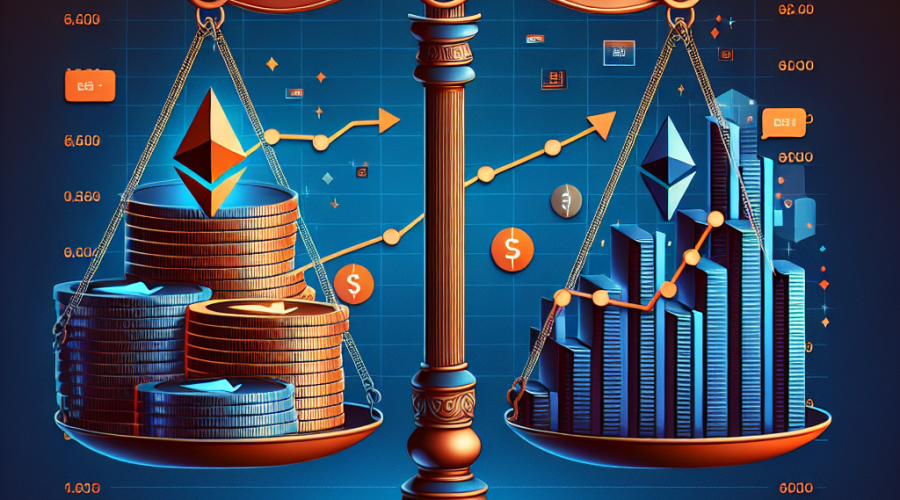The Cardano (ADA) cryptocurrency has once again captured the attention of the digital asset community as it approaches a key price support level. Many traders and analysts are watching closely, debating whether this pivotal point could be the springboard for the next major ADA rally. At the same time, market participants are noting the rise of new projects, such as Remittix (RTX), that focus on practical financial solutions. This article examines Cardano’s price dynamics, contrasts its prospects with the innovative Remittix project, and discusses what drives the appeal for both in the current crypto environment.
The Cardano Price Landscape: Key Support Holds the Spotlight
As of early June 2025, Cardano’s ADA token is trading around $0.57, a level that has frequently acted as a critical line in the sand for the cryptocurrency over the past twelve months. The digital asset markets have been particularly reactive whenever ADA approaches this price threshold, often resulting in decisive moves—either upward rebounds or sharp breakdowns. This repeated interaction with a crucial support area has made ADA’s chart pattern a favorite among technical analysts.
A major focus among Cardano observers is the parallel channel that has defined ADA’s price action through much of 2024 and into 2025. Below the $0.55–$0.52 range lies a support band that has launched several prior rallies. On the flipside, resistance above $0.80 has repeatedly contained these upward surges. The interplay between these price levels sets the stage for the next phase of Cardano price predictions.
Parallel Channel Analysis: Will ADA Repeat History?
Chartists, or technical analysts, have long identified the importance of the parallel channel visible in ADA’s daily price chart. Cardano has been locked in this sideways movement, oscillating between well-defined upper and lower boundaries. Each time the token has approached support near $0.52, it has historically bounced back sharply, often making quick runs to higher levels around $0.70 or even $0.80. This recurring pattern is fueling trader behavior, as many look to time their entries based on repeated historical outcomes.
Should ADA once again successfully defend this support zone, expectations are building for a “breakout move.” A bounce could quickly bring Cardano back to the upper reaches of its channel, possibly challenging the psychological $1.00 barrier. Bulls are even setting their sights on $1.50—a target that, if reached, would represent significant gains from current levels and could mark a return of major institutional and retail interest.
However, market participants are acutely aware that if support is lost, the downside could accelerate quickly, potentially pushing ADA toward its multi-month lows. Because the parallel channel has provided such reliable trading signals in the past, a clear break from this pattern will likely trigger strong reactions—either enthusiastic buying or sudden selling.
The Fundamentals Behind Cardano’s Price
While price patterns capture immediate trader interest, the Cardano project is also frequently discussed because of its underlying blockchain technology. Designed to compete with other smart contract networks such as Ethereum and Solana, Cardano aims to provide a secure, scalable, and decentralized environment for decentralized applications (dApps). Its consensus mechanism, Ouroboros, is celebrated for its energy efficiency and academic rigor.
Despite these strengths, some critics argue that Cardano’s pace of development—when compared to its peers—has led to relatively slower adoption among developers. Still, the core Cardano community remains confident in the position of ADA as a top-tier digital asset, particularly emphasizing its security, research-driven approach, and recent growth in ecosystem activity.
Rising Competition: The Emergence of Remittix (RTX)
While Cardano enthusiasts await a decisive move, attention has shifted toward emerging projects that target different user needs—and potentially faster adoption. One such notable entrant is Remittix (RTX), a token and financial services protocol targeting real-world payment problems.
Unlike Cardano, which primarily focuses on facilitating decentralized finance (DeFi) and supporting smart contracts, Remittix centers its value proposition on improving cross-border money transfers. The platform enables users to move cryptocurrencies directly into traditional bank accounts in over 30 countries, making international transfers faster, cheaper, and simpler for individuals and businesses alike.
Remittix: Real-World Use Cases and Rapid Early Growth
Part of Remittix’s appeal lies in its tangible, everyday utility. The platform is built to bridge the gap between the cryptocurrency world and established financial systems by facilitating swift and cost-effective remittances. For the legion of users globally who depend on international transfers—whether to send money home to families or handle small business payments—Remittix’s crypto-to-bank payout functionality demonstrates a clear real-world use case.
In terms of growth metrics, Remittix is rapidly gaining traction, posting impressive milestones in its early phase. The project has successfully raised over $28 million from early backers, and more than 684 million RTX tokens have been sold to date. The current trading price of RTX, hovering near $0.12, signals ample room for appreciation if adoption continues at the current pace.
Exchange accessibility is another crucial factor behind Remittix’s growth. The token is already listed on established exchanges like BitMart and LBank, with additional listings expected in the near future. This expanded digital marketplace exposure not only increases liquidity but also broadens the appeal to new demographics of traders and users.
Moreover, Remittix is not just about promises—its wallet is already live in beta, and users are actively conducting real payout trials from crypto to bank accounts. This immediate usability enhances credibility and distinguishes Remittix from projects still in the developmental stage.
Comparative Analysis: Smart Contracts (ADA) vs. Smart Payments (RTX)
While both Cardano and Remittix inhabit the broader cryptocurrency universe, they cater to fundamentally different market demands. Cardano is primarily recognized for its advanced smart contract capabilities, which empower a wide spectrum of decentralized applications and solutions. Its focus is on creating a robust, programmable foundation for next-generation financial and digital services.
Remittix, in contrast, is built with a “payments-first” mentality, meaning its infrastructure is designed for immediate, practical use. The premise is simple but powerful: make it easier for people to move money across borders—instantly and affordably—using the crypto rails but interfacing directly with traditional financial accounts.
This divergence in focus also influences each project’s potential growth trajectory. Cardano’s market outlook is closely tied to broader smart contract adoption, DeFi expansion, and ecosystem development—all of which can be gradual. Meanwhile, Remittix’s measurable advantages in solving specific remittance pain points could potentially yield a faster adoption curve, especially in regions underserved by conventional banking systems.
Market Sentiment and Analyst Views
In the short to medium term, ADA’s price movement will hinge largely on whether it can sustain its critical support and whether renewed interest from both retail and institutional buyers materializes. If the parallel channel persists, traders could see another wave of speculative buying, driving momentum back toward the $1.00 and $1.50 levels.
For Remittix, sentiment is increasingly optimistic, fueled by a combination of strong early fundraising, exchange integrations, and its live, functioning wallet product. With over $28 million secured and ongoing expansion into new markets and exchanges, analyst forecasts for RTX point to the possibility that it could outpace some more established DeFi-centric tokens if it can continue to deliver on its promises.
Conclusion: Navigating the Evolving Crypto Landscape
As June 2025 unfolds, Cardano’s ability to defend its long-standing support level could set the tone for its next significant price move. For bullish investors, the prospect of ADA climbing toward $1.50 is both enticing and plausible—provided the broader crypto market remains constructive and Cardano executes on its technical roadmap.
Simultaneously, the example of Remittix serves as a reminder that success in the cryptocurrency sector increasingly depends on practical use cases and real-world adoption. The future may well be carved out by projects that successfully marry technical innovation with immediate, everyday value for users worldwide.
For crypto enthusiasts and investors, monitoring these divergent but equally compelling stories offers insight into where capital and attention may flow next—which, in the rapidly changing world of digital assets, could make all the difference in finding tomorrow’s market leaders.


















